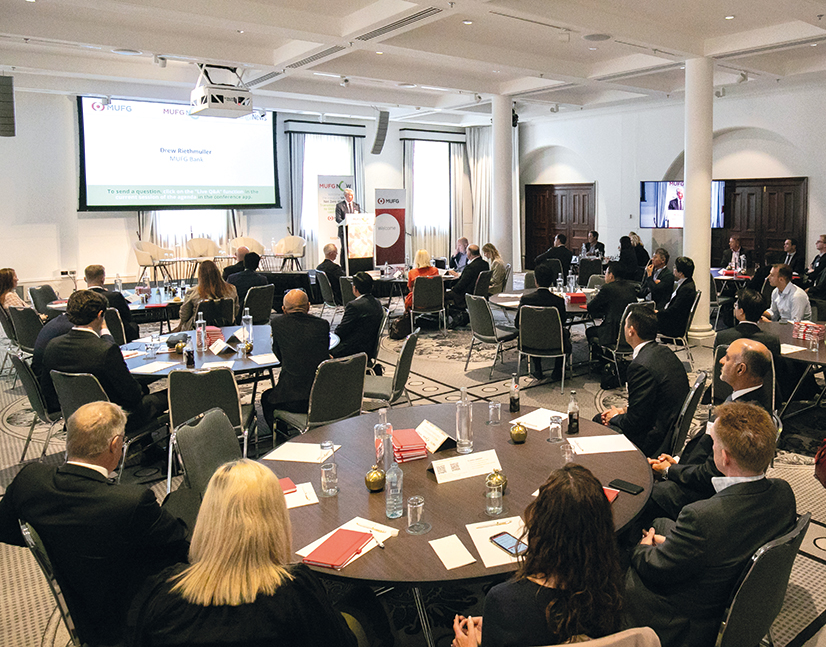
Refreshed ASFI delivers market leadership
The Australian Sustainable Finance Institute has a new board, a more permanent role and a freshly minted executive officer, Kristy Graham. The institute’s goals have not changed: to drive realignment of the Australian financial services system so more money flows to support sustainability. Graham updates KangaNews Sustainable Finance on developments including taxonomy progress and work with international peers.
How will changes at the Australian Sustainable Finance Institute (ASFI) help accelerate its goals?
We have established a permanent institution, refined our strategy and we are in the process of staffing up and formalising our partnerships with other organisations, such as RIAA [Responsible Investment Association Australasia] and Climateworks Centre.
Many other organisations are working to support the roadmap, which has boosted our ability to deliverand implement its recommendations. There is a lot of goodwill and support from our 21 founding members, which bought into the concept of a permanent ASFI and recognise their backing and participation will accelerate implementation. By the end of the year, we would like to grow membership to 35 and have a few more staff members.
Is ASFI pursuing a more diverse membership and would it like to see greater participation from the Council of Financial Regulators (CFR) and corporate entities?
As part of our establishment, we have an advisory committee that formalises diversity of views and representation. Diversity was a strength of the roadmap development phase and is something we are keen to continue. All the legacy steering group organisations transferred to our new structure and we have added more from the government.
As we work on our priority projects, we are ensuring diversity through working groups and project steering committees. Some of our future work will be done with ASFI members but other projects will be open to all.
We have a close working relationship with the CFR – including Treasury, which had previously been less engaged. My government background has complemented ASFI’s existing networks, particularly on the taxonomy. We are having a lot of discussion with the CFR to ensure our work is well connected with its priorities, and the CFR will be involved in multiple levels and ways for major projects.
ASFI’s aim is to align its work with the EU’s High Level Expert Group and the UK’s Sustainable Finance Taskforce. How much collaboration is there?
During the establishment phase in 2021 we had quite a bit of engagement with the EU regulators including running several events and workshops. One was a closed-door conversation between EU and Australian regulators to talk through issues like taxonomy and climate-related financial disclosure.
We are strengthening these international relationships but it is a work in progress. We are also building a relationship with the Canadians and the individuals driving the industry-led taxonomy process in Singapore.
We also have a close sister relationship with the New Zealand Centre for Sustainable Finance. Our roadmap process worked in parallel with the New Zealand version and we compare notes on a fortnightly basis. International relationships will be important and integral to ensuring a taxonomy is well-aligned and interoperable internationally.
Japan is also on our list and we hope to make headway there this year. The Japanese have worked a lot on transition and they have taken a different approach from the EU. This is something we want to understand.
If these taxonomies vary between countries – for instance, if Japan’s taxonomy is markedly different from the EU’s – what will the impact be on financial markets and the flow of capital?
Ultimately, everyone wants interoperability between taxonomies. This does not mean they have to be exactly the same, but investors and financial institutions reporting under the taxonomies do not want to report using multiple frameworks.
Countries will often come up with something that suits them domestically but international norms will emerge over time. International interoperability and harmonisation, as much as possible, will be the goal. This will facilitate lower transaction costs.
For example, Japan has industry specific transition pathways that align with government sectoral plans, opposed to the EU’s method of labelling specific economic activities as sustainable according to technical screening criteria. Early work on the Australian taxonomy will determine the most appropriate approach for Australia.
We want convergence around a framework so capital can easily flow internationally regardless of where a financial institution is headquartered or has operations. There is still a long way to go on taxonomy, though.
What is the latest on the taxonomy development?
Over the last couple of months, we have been talking to regulators, our members and other parts of industry about how an Australian taxonomy fits within the sustainable finance policy architecture. There is a lot of interest from our members and the CFR for us to accelerate the work.
It was initially planned for 2023. But given the EU reporting requirements are coming in sooner, the sense is that if Australia has not at least started work in this area we will be a rule taker. We would be accepting internationally set rules that may not be appropriate for our context, particularly with regard to the transition challenge many sectors face.
Work on the transition pathway in the Australian context is important to ensure enough capital is flowing to support it. We have gone out to members to contribute expertise to the project, to balance between getting things done relatively quickly – given other countries are moving ahead on this – and ensuring we are getting expertise and different perspectives into the process.
The regulators have indicated they want to be involved in the project’s steering committee. There is also an expression of interest out for a technical advisory group that will recruit people with expertise developing taxonomies – not just the process, but of what the technical screening criteria might look like. Over the next month, we will be appointing a project team to build the taxonomy.
When the project team is on board, we will look at the international framework as well as scope, ambition and purpose, and apply what we know about the Australian context to come up with a plan to build the taxonomy. The intention is to complete this work over the next few months.
Most countries are doing this with the backing of government. What are the pitfalls of developing a taxonomy as a commercially backed venture?
There is some difference between government-backed and government led. In most countries the government is leading – it is driving the process with a complete regulatory framework a taxonomy would fall under.
But with the CFR’s involvement in the project, we have its full weight behind our taxonomy. While it is not a government-driven process, we are conscious of the need to work closely with government and make sure it is invested in the taxonomy.
We have had conversations with the CFR about pathways to adoption and there is precedent for the Australian Securities and Investment Commission (ASIC) adopting an industry developed code, among other approaches.
To date, has industry achieved the goals ASFI set out in its roadmap?
On Task Force on Climate-Related Financial Disclosures (TCFD)-aligned disclosures, we have seen strong movement off the back of work IGCC [Investor Group on Climate Change] and ACSI [Australian Council of Superannuation Investors] have been doing. ASIC is taking the lead on this from a CFR perspective and regarding international developments concerning ISSB [the International Sustainability Standards Board]. The disclosure-related recommendations are well on track.
When it comes to our other priorities, TNFD [Taskforce on Nature-Related Financial Disclosures] will be another key priority this year and we are working with our partners to support Australian financial institutions to pilot the beta framework.
How important is nature risk as a sector for ASFI to work on and are there any plans to encourage companies and investors to consider TNFD?
We are working to support Australian financial institutions to participate in the beta testing process, for a few reasons. One is that it is a good way to shape the development of the international standard and to build capability on natural capital, and nature-related risks and disclosures within financial institutions in Australia.
As identified in the roadmap, we are keen to make sure the international framework and guidance that is released is applicable and useful in an Australian context. This work will also help shape and inform how this is implemented on a domestic level, which will happen after the framework is finalised at the end of next year.

HIGH-GRADE ISSUERS YEARBOOK 2023
The ultimate guide to Australian and New Zealand government-sector borrowers.

WOMEN IN CAPITAL MARKETS Yearbook 2023
KangaNews's annual yearbook amplifying female voices in the Australian capital market.










